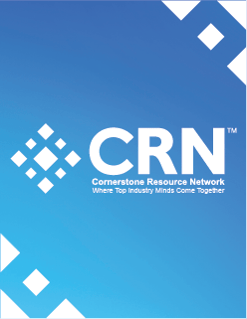5 min read
Quandary 2021: Responding to Competitive Shifts in Overdraft Fees
By: Steve Simpson on Nov 10, 2021 2:26:21 PM

News of waiving overdraft fees may sound like a big win for consumers. But it comes with a pile of unintended consequences.
Checking fee income is facing extreme downward pressure during 2021, influenced by competitive factors and the specter of greater future regulation. For an America that’s benefited from more than $5 trillion of stimulus money, news of waiving overdraft fees may sound like another big win for the consumer.
However, this issue is not so cut and dried for two important reasons:
- There will be unintended consequences of new strategies aimed at reducing overdraft fees that consumer and those favoring the trend are not thinking through completely.
- The consumer banking model that delivers convenient branches, contact center, digital banking, debit cards, fraud protection limits, cybersecurity, and access to larger amounts of cash needs revenue to sustain itself.
The Unintended Consequences of Waiving Overdraft Fees
Several financial institutions are following the SpotMe initiative introduced by fintech Chime by waiving overdraft fees. Sounds like a slam dunk, but here are a few things bankers and consumers should consider:
- If an FI “waives” the return fee, bully for them, but it doesn’t help the poor consumer now that the item has been returned or denied.
- The consumer must now deal with the dry cleaner and the mortgage company, and risk service interruption with a utility.
- The merchants will receive more returned items, have increased costs, and charge more return fees.
- Many merchant return fees are more than what FIs charge, especially mortgage companies that charge a percentage of the returned item plus a late fee. Now the consumer may need to deal with many different businesses to address these large fees.
- The consumer may suffer a lower FICO score, resulting in a higher cost of credit.
Sadly, policy makers and consumers will deem all these industry and consumer costs as “unintended” because … who knew!?
Here’s what’s ironic: the consumer-focused statistic the Consumer Financial Protection Bureau should be tracking is the Pay Ratio. Do financial institutions truly “have the customer’s back” by paying items presented instead of returning them? For families working paycheck to paycheck, keeping payments moving keeps daily living afloat.
With this reality in mind, there are important consumer-friendly practices related to the maximum number of daily fees, the actual fee amount, proactive balance alerts, and financial education that keep overdraft fees from deviating into a dysfunctional cycle. Financial institutions should explore these strategies in earnest while remembering the friendliest thing an FI can do for the consumer is to PAY THE ITEM!
Also, bankers should be careful not to over-glorify Chime’s SpotMe. This free overdraft program starts at a measly $20 and requires an electronic deposit. A consumer may then qualify for up to $200, but in the fine print, one will note SpotMe only applies for electronic items: no checks or ACH overdrafts. Some FIs considering following Chime’s move are considering all overdraft items.
Again, these FI’s are missing the point that the most important goal is to “strive to pay” items on behalf of the consumer. Most FIs have much higher overdraft limits for consumers than Chime’s $200. Most flat limits for consumers are more than double Chime’s, and FIs with dynamic limits have limits as high as $2,000. So, what will happen to these consumers if limits must decline as the fee revenue vanishes? Bankers and consumers really don’t want to return to the days when all items were returned.
Non-Interest Income’s Impact to the Consumer Banking Model
Non-interest income accounts for roughly 25% of the average financial institution’s revenue, and now this revenue that helps sustain broad retail convenience offerings is under attack. Retail bankers should be talking strategically about just how impactful declines in non-interest income may be for their bank’s earnings. Bankers first saw this effect when the Durbin amendment slashed debit and free checking all but vanished at the big banks.
Challenger banks see an advantage to eliminate overdraft because they have no branch system. This equation is much more difficult for more traditional FIs. To compete in the future in this fee-challenged environment, banks and credit unions must use analytics to truly understand the value contribution of their retail delivery system while also maturing their digital growth programs.
Creating the “right data” to leverage and then using it effectively to drive digital customer acquisition and engagement is more vital than ever as the legacy retail banking model. While most consumers do not bank mobile-only today, the mobile-first players and growing scenarios around overdraft regulatory practice mean that traditional financial institutions will face increasing pricing pressure from these players. Optimizing this transition takes planning, analytics, and a clear vision of who each bank wants to serve and how they will align the delivery experience around a specific strategy.
The new world of overdraft competition and regulation will require a stronger focus on retail delivery channel investments and the proactive development of digital growth strategies.
Analytics can be an important tool in executing this strategy to answer the following key questions:
- What production goals and future vision should we set for our digital branch? What transformation must occur to hit these numbers?
- How can we reinvent digital onboarding to stand out as “easy to do business with” and increase our cross-sell?
- How can we use data to truly benefit customers while also helping the bank grow profitably?
- Can we empower our overdraft program with the right “event-stamped data” to permit analytics to help us compete while also paying more items for our best deposit-engaged customers?
GonzoBankers have a lot of work ahead responding to these major shifts in retail banking and setting a smarter growth strategy for the future. Hoping these pressures will simply go away is unrealistic – this year’s strategic and budget planning is a good time to start addressing these new realities.
5 min read
The Holy Quest for CRM in Anytown, USA
Apr 25, 2024by Elizabeth Gujral
7 min read
Where Does Chime Go From Here?
Apr 4, 2024by Ron Shevlin

.png?width=1000&height=250&name=Cornerstone_Advisors_Logo-removebg-preview%20(1).png)



-2.png?width=247&height=320&name=MicrosoftTeams-image%20(36)-2.png)
-2.png?width=247&height=320&name=MicrosoftTeams-image%20(35)-2.png)
